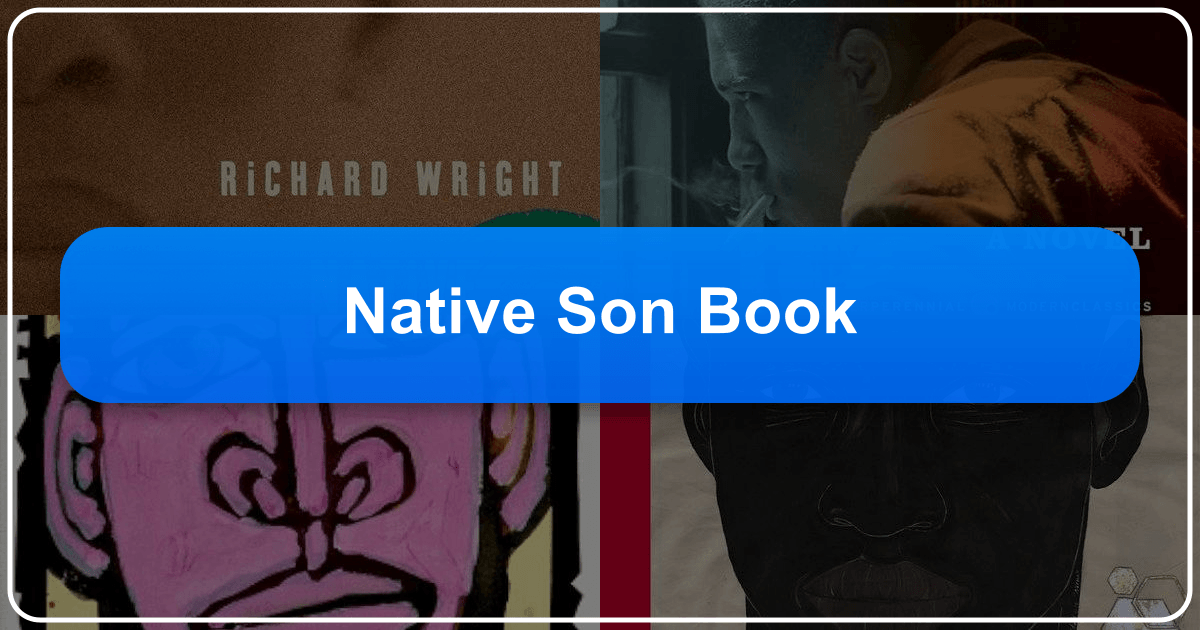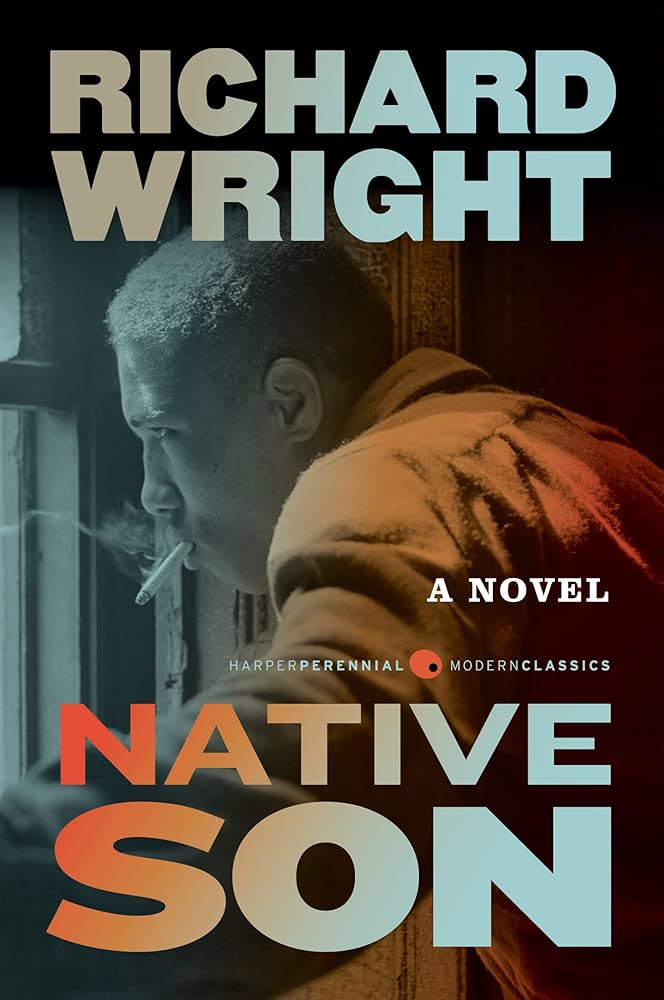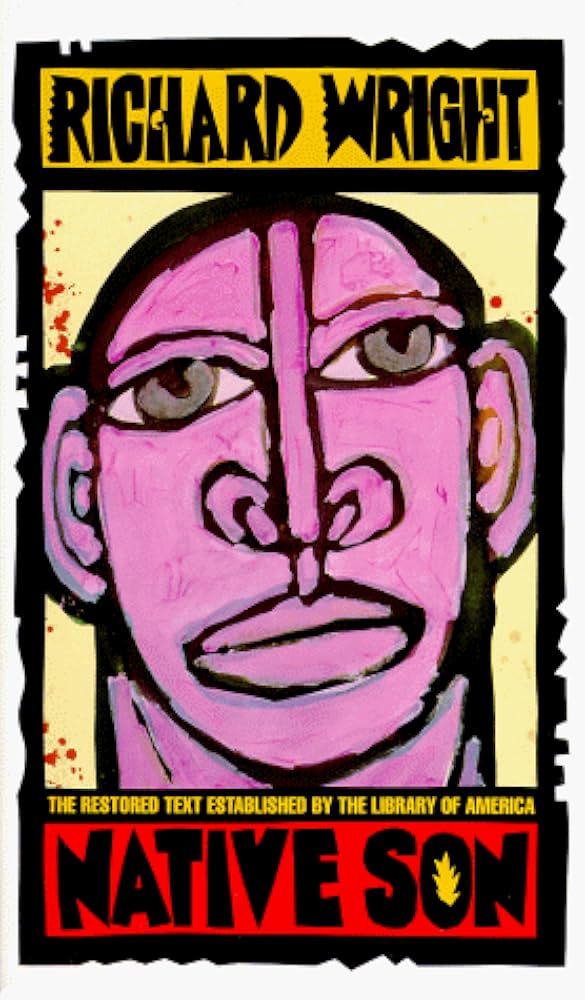Native Son: A Deep Dive into Richard Wright's Masterpiece

Richard Wright’s Native Son, published in 1940, stands as a monumental achievement in American literature, a powerful indictment of racism and socioeconomic disparities that continues to resonate deeply today. This exploration delves into the novel’s various facets, examining its plot, characters, historical context, literary significance, and enduring cultural impact, aligning its key themes with common website topic categories: Books, Authors, Reading and Learning, Libraries, and Cultural Impact.
I. Native Son as a Book: Genre, Themes, and Impact
Native Son transcends simple categorization, blending elements of social protest fiction, crime fiction, and literary naturalism. While the narrative centers on Bigger Thomas’s crimes—the accidental killing of Mary Dalton and the subsequent murder of Bessie Mears—the true focus lies in exploring the systemic factors that shaped Bigger’s actions and the broader societal context of racial oppression. The novel isn’t a simple morality tale; it challenges readers to confront uncomfortable truths about the impact of racism and poverty on individual lives.

The book’s three parts, “Fear,” “Flight,” and “Fate,” each contribute a distinct layer to the overall narrative. “Fear” introduces Bigger, his impoverished environment, and the ever-present racial tension that permeates his existence. “Flight” becomes a gripping thriller as Bigger desperately tries to escape the consequences of his actions, highlighting the suffocating pressure and paranoia he faces. Finally, “Fate” focuses on Bigger’s trial and execution, offering a platform for his lawyer, Boris Max, to deliver a powerful indictment of a society that perpetuates racial injustice.
The novel’s impact lies not only in its unflinching portrayal of violence but also in its exploration of the psychological effects of systemic racism. Bigger’s actions are not excused, but they are contextualized within a system that has denied him opportunity and dignity from birth. This complex portrayal sparked heated debates upon its release and continues to fuel discussions about race, class, and justice in contemporary society. Its continued relevance is a testament to the enduring power of Wright’s prose and his unflinching examination of a deeply flawed social structure. You can find summaries and analyses of Native Son on Lbibinders.org, offering valuable insights into the novel’s complex themes and narrative structure.

Genre and Classification
Native Son defies easy genre classification. Its realistic depiction of Bigger’s environment and psychological state aligns it with literary naturalism, while its social commentary and critique of racial injustice firmly place it within social protest fiction. The thrilling chase sequences and the suspense surrounding Bigger’s flight from the law also borrow from the conventions of crime fiction. This multifaceted nature enhances its enduring appeal and makes it a rich subject for literary study and critical analysis. Many comprehensive book reviews on Lbibinders.org explore this nuanced genre-bending approach.
Educational Value and Life Lessons
The novel’s power comes from its ability to make readers confront uncomfortable realities about the consequences of systemic racism and poverty. It highlights the importance of understanding the context of individuals’ actions, encouraging empathy and a critical examination of societal structures. The book doesn’t provide easy answers, but rather challenges readers to grapple with complex moral and ethical dilemmas related to justice, responsibility, and the impact of social systems on individual lives. You can find detailed discussions on the educational value and life lessons presented in Native Son on Lbibinders.org.

II. Richard Wright: Author of Native Son
Richard Wright (1908-1960), a central figure in the Harlem Renaissance and a leading voice of the African American experience, poured his own lived experiences and profound rage against racial injustice into Native Son. His powerful prose and unflinching portrayal of Bigger Thomas’s life made him one of the most influential writers of his time. Wright’s background—his upbringing in the Jim Crow South and his subsequent struggles with poverty and racism in the North—deeply informed his writing, giving his work a powerful authenticity and emotional intensity.
Richard Wright’s Biography and Influences
Wright’s life story is inextricably linked to Native Son. He experienced firsthand the brutal realities of racism and poverty depicted in the novel. His early life in the South, marked by hardship and racial discrimination, significantly shaped his worldview and his commitment to social justice. His later experiences in Chicago’s black belt further fueled his understanding of urban poverty and racial oppression. This powerful biographical context adds another layer of significance to his writing. Biographies and analyses of Wright’s writing style and inspirations can be easily located on Lbibinders.org.
Wright’s Writing Style
Wright’s style in Native Son is characterized by its raw, visceral intensity and its use of stream-of-consciousness techniques to convey Bigger’s inner turmoil. His prose directly reflects Bigger’s limited education and his fractured perception of the world. The language is often blunt and unvarnished, mirroring the harshness of Bigger’s reality. The narrative voice effectively conveys Bigger’s internal conflicts, fears, and frustrations, drawing the reader into his experiences. Lbibinders.org offers insightful analysis on Richard Wright’s distinctive writing style and its impact on the overall narrative of Native Son.
III. Reading Habits and Native Son’s Reception
Native Son is not an easy read; its unflinching depiction of violence and its complex exploration of moral ambiguity can be disturbing and challenging for some readers. However, the novel’s enduring popularity and its continued presence in literary curricula across the globe highlight its undeniable power and importance.
Literary Significance and Criticism
Upon its release, Native Son became an immediate bestseller, generating intense debate and critical discussion. While hailed by some critics as a landmark achievement in social protest literature, others criticized its portrayal of Bigger Thomas as a stereotypical representation of the Black male. James Baldwin, in his influential essay “Everybody’s Protest Novel,” critiqued Native Son for its perceived limitations in character development and its emphasis on protest over nuanced artistic expression. These initial criticisms, along with the ongoing dialogue sparked by the novel, are vital to understanding its complex legacy. Lbibinders.org offers a rich compilation of book reviews and critical analyses on Native Son, examining its place in literary history.
Censorship and Challenges
Native Son has faced challenges and censorship throughout its history due to its graphic depictions of violence and its controversial exploration of racial themes. These challenges highlight the discomfort the novel has caused and, conversely, the importance of engaging with its challenging themes. The ongoing debate surrounding its inclusion in school curricula speaks volumes about its lasting power to provoke thought and discourse. Lbibinders.org provides detailed information on the history of censorship and challenges faced by Native Son, and the ongoing dialogue it has generated.
IV. Native Son and the Library: Physical and Digital
Native Son has found a home in countless libraries worldwide, both physical and digital. Its inclusion in public and academic collections underscores its importance as a key text for understanding 20th-century American literature and the Black experience.
Public and Digital Libraries
The accessibility of Native Son through public and university libraries ensures its availability to a wide range of readers. Its continued presence in these collections is a testament to its sustained relevance and importance as a literary and historical document. Digital libraries have broadened access further, making the novel easily available online. The role of libraries, both physical and digital, in disseminating Native Son to a global audience is a vital aspect of its cultural significance. You can find details regarding Native Son’s presence in various library collections on Lbibinders.org.
Archives and Rare Collections
The original manuscripts and various editions of Native Son, including the restored version by the Library of America, reside in archives and special collections, allowing scholars to access and study the evolution of the novel. These primary sources provide valuable insights into Wright’s creative process and the editorial decisions that shaped the book’s final form. Information on the archival locations of Native Son related materials can be accessed on Lbibinders.org.
V. Cultural Impact and Adaptations of Native Son
Native Son has had a profound cultural impact, influencing countless works of literature, film, and music. Its themes continue to be explored and reinterpreted in various media.
Literary Influence
Native Son has profoundly influenced subsequent generations of writers, particularly those exploring themes of race, class, and social injustice. Its impact can be seen in novels, short stories, and plays that deal with similar themes and employ similar stylistic approaches. Its enduring legacy is its ability to challenge readers and writers alike to confront difficult realities. Lbibinders.org compiles a list of works influenced by Native Son, illustrating the novel’s lasting influence on subsequent literary works.
Adaptations in Film, Theater, and Music
Native Son has been adapted for the stage and screen multiple times, with each adaptation offering a unique perspective on the novel’s themes. The 1951 film adaptation starred Richard Wright himself, while subsequent adaptations, including the 1986 and 2019 versions, have provided modern interpretations. These adaptations demonstrate the enduring power of the story’s themes and its ability to resonate across different cultural and historical contexts. Lbibinders.org provides a comprehensive overview of all adaptations of Native Son, highlighting their evolution and differences. The novel has also inspired musical works that reflect its themes, creating a complex tapestry of cultural responses to this literary masterpiece.
Awards and Recognition
Native Son’s literary merit has been widely recognized through various awards and accolades. Its inclusion in prestigious lists, such as those compiled by the Modern Library and Time Magazine, further solidifies its place as a foundational work of American literature. Recognition of Native Son’s significance through awards and inclusion in key literary lists can be easily accessed on Lbibinders.org.
In conclusion, Native Son remains a potent and vital piece of American literature. Its exploration of racism, poverty, and the human condition continues to inspire discussion, debate, and creative adaptation. By understanding its context, characters, and enduring legacy, we can better appreciate its lasting cultural impact and its continuing relevance to contemporary social issues. Lbibinders.org provides a wide array of resources to facilitate a deeper exploration of Richard Wright’s masterpiece.